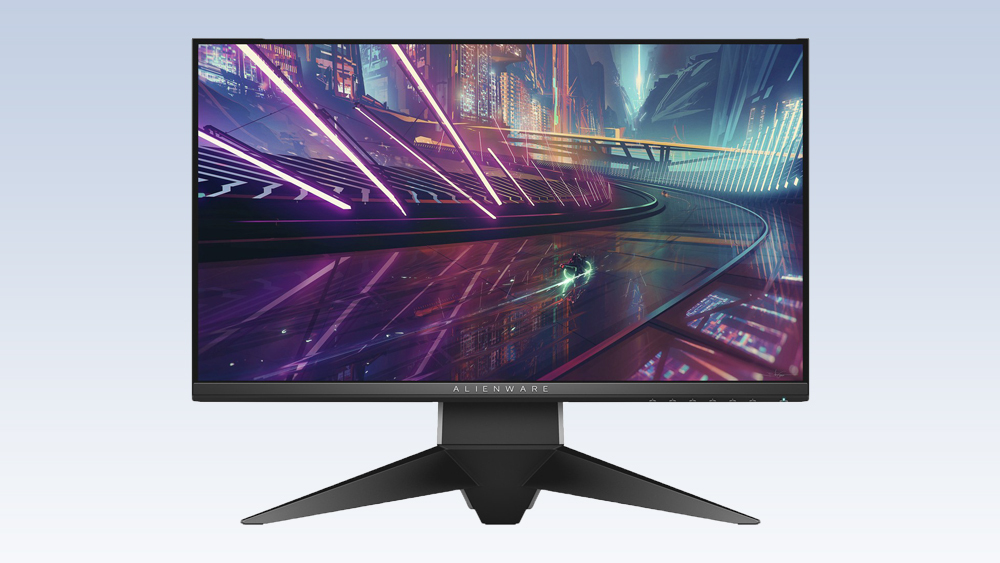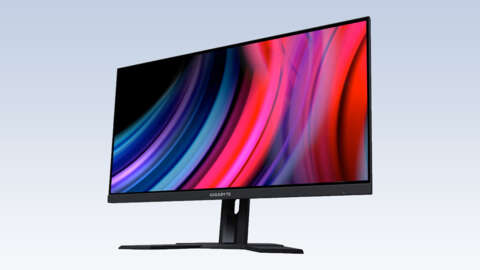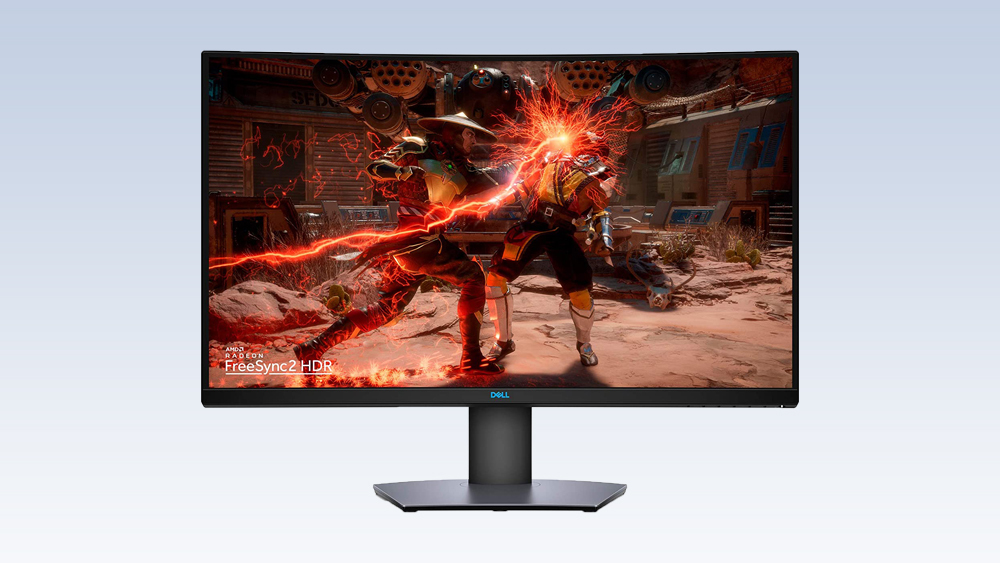Best Display Panel Technology For Gaming: TN vs. IPS vs. VA
Here's the difference between TN, IPS, and VA panels and how they affect your gaming experience.
If you're in the market for a new gaming monitor, you're going to brush up against three distinct types of displays that all come with their own pros and cons. We're here to break down exactly what you need to know about TN, IPS, and VA panels and help you make the right choice for your exact gaming needs.
There are three display panel types that cover most gaming monitors (cutting-edge technology like mini-LED and OLED are coming, but we won't cover that here). TN (twisted nematic), IPS (in-plane switching), and VA (vertical alignment) all use the same technology at their core--molecules that react according to different voltages to move and produce an image--but their differences and evolutions have made each one good for specific use cases.
Types of panels
TN (Twisted Nematic)
TN panels are the oldest of the three, dominating the market when LCD displays were introduced and quickly phasing out those old (but still good) CRT monitors. Since TN panels came first, they also feature the most compromised performance if you're looking for a display that can make your games look their best.

TN panels have the worst viewing angles of the three, with colors able to drastically shift from even slight angles off the center of the display. TN also has the worst color coverage, with the inability to show a high color depth and producing noticeable banding due to interpolation. Contrast ratios are also poor, with the overall image looking washed out compared to IPS and VA.
So, if TN is this poor, why is it still on the market? For one, TN panels are incredibly cheap, which is why you'll often find them in budget gaming monitors that can still deliver a good, if not great, image. TN is also still the fastest panel type on the market, with pixel response times (the time it takes for a pixel to change color) as fast as 1ms. While IPS and VA panels have managed to get there, they often make use of methods that lead to other issues (such as smearing or inverted ghosting), which keeps TN panels relevant for speed.
For that reason, TN panels are ideal for competitive gaming, especially in the realm of esports where response time is much more important than image quality. If you're primarily playing Counter-Strike: Global Offensive, Fortnite, or Call of Duty: Warzone, you'll probably benefit the most from a TN monitor if all you care about is securing those wins. Plus, you'll save a bunch of money in the process.
IPS (In-Plane Switching)
On the other end of the spectrum is IPS, or in-plane switching. Although many manufacturers use IPS displays now, the term was initially coined by LG and used exclusively by the company. Nowadays, though, it's not uncommon to see the likes of Dell, Asus, and AOC producing IPS displays.
The biggest benefit of IPS is its wide viewing angles, which prevent colors from changing when viewed from as much as 80 degrees off axis. This makes it a great choice for multiplayer gaming on a single display or for professionals who require accuracy when producing work that is color sensitive. Speaking of colors, IPS panels are also the most accurate out of the three options, making it the only choice if you want to edit professional photos or videos as well as play games on a single display.

In the past, one of the biggest compromises you had to make with IPS displays was pixel response time and refresh rate, but as the technology has evolved it has managed to shake these off. You can now find IPS displays with refresh rates well into the 240Hz range, with response times matching that of the 1ms on TN. You'll pay a premium for that, with most high-end displays on the market featuring these specs, but it's also possible to enjoy some of the benefits with cheaper IPS products. You might get a response time closer to 4ms and maybe a limited refresh rate ranging from 60-144Hz, but if you care about what your games look like then it's a massive step up from TN.
One big disadvantage across the board with IPS panels are their poor contrast ratios, making them worse options for dark rooms than VA. It can make dark areas in games look more milky grey than black, made worse by the uneven backlighting that can be viewed at different angles (also known as IPS glow). The color reproduction is still the best it can be on an IPS display, but if you mostly play games at night or in a dim room, you might want to consider a VA panel.
Read more: Razer Raptor 27 gaming monitor review
VA (Vertical Alignment)
Speaking of VA (vertical alignment) panels, there's a reason the majority of LCD TVs use this panel type. It's the jack-of-all-trades panel, with better color reproduction than TN panels as well as a much better contrast ratio compared to IPS. VA panels, depending on the overall display specs, can also be cheaper than IPS panels in most cases, occupying a good middle ground between performance and price that is difficult to argue against.
VA panels can't produce the same color accuracy as IPS, but they're still a massive improvement over traditional TN panels. It's why manufacturers like Samsung have used VA panels almost exclusively across both monitors and TVs over the years, injecting them with its proprietary quantum dot technology to close the gap. They're also cheaper to produce, meaning you're likely to find a better all-in-one package with little compromise at a much lower price than IPS.

One area where VA truly excels is contrast. It's a night-and-day difference compared to IPS, with VA panels able to produce far inkier blacks and really accentuate dark areas in games, especially when you're playing in a dim environment. This is one of the strongest reasons for owning a VA panel, especially if the "IPS glow" really bothers you. You do, however, lose out on the wider viewing angles that IPS offers.
One issue with VA is its response times, like IPS. It can reach 1ms in very specific cases, but this often leads to a lot of smearing or inverse ghosting (where ghost trails behind shifting pixels have colors inverted), which make the gains moot. On average, a VA panel will have worse smearing at the same pixel response times when compared to an IPS panel, primarily down to how the vertical alignment of the molecules in the display function. It's something you might notice when playing at very high refresh rates and in fast-paced games, but it's also something that a lot of people don't have an issue with at all.
Which panel type is best for you?
The competitive gamer
If getting the fastest response times and highest frame rates possible is crucial to your gaming, there's no question that a TN panel is still your best option. Competitive gamers who benefit from the fractions of a second that a pixel can take to update will find no corners cut on any TN panel out there, and they'll benefit from the high refresh rates most offer.
Similarly, if you're on a very tight budget and you're looking for the right monitor to accompany a machine built for games like League of Legends, Dota 2, or Fortnite, then choosing a TN panel could help you put more money toward the hardware that powers your games instead. You'll be missing out on the better color reproduction that TN lacks, but if you're just planning to play games casually and not take in their sights, then you can save yourself a lot of money.
TN monitors to consider:
The budget-focused gamer
If single-player games are mostly what you use your PC for and you're strictly keeping it for recreational use, then it's difficult to argue against a VA panel. It's a considerable step up from TN and will let you enjoy your games with visuals as their designers intended. The deep blacks will let you immerse yourself in moody atmospheres, while the cheaper prices could afford you the ability to get a bigger monitor with a decently high refresh rate.
VA panels also give you a lot of range to stretch your budget, whether you're just looking for a slightly-above-average display or one to really bring out the best in your hardware. From 1080p to 4K, it's easy to find a great VA-equipped display that won't break the bank or go ultra-premium with one of Samsung's top-of-the-line products. The company's latest G7 (or Odyssey G9, if you have the space and the money for it) feature outstanding HDR support, incredible contrast, and great color, if you're willing to invest in their high price points.
VA monitors to consider:
The all-rounder
If you're looking for a monitor that can do it all, there's nothing beating out an IPS panel. Many new monitors feature the more advanced fast IPS panels, which remove many of the compromises you used to have to make with regards to pixel response times and high refresh rates.
The viewing angles, the color reproduction, and the overall experience of an IPS panel just can't be beat right now, making it the perfect accompaniment to a high-powered gaming PC, console, or workstation. They're accurate enough for some professional work, whether you're color-correcting photos or videos, and fast enough to keep up with your favorite competitive games or engrossing single-player adventures.
IPS panels are also ideal for local multiplayer gaming with their wide viewing angles, but these come at the cost of good contrast ratios and potential backlight bleeding. If you're only planning to play games in a dark environment, a VA might be better suited to your needs. But if you're looking for a panel with the fewest compromises, it's hard to argue against IPS.
IPS monitors to consider:
We've highlighted some of our favorite monitors with each display panel type above, but if you're looking for more options for well-priced displays, check out our guide to the best cheap gaming monitors on the market right now as well as the best monitors for PS5 and Xbox Series X. If monitors are just too small, we also have recommendations for the best 4K TVs for PS5 and Xbox Series X, some of which can also work well for PC gaming. If you’re looking for some more information on the types of monitors out there, we’ve got a list of the differences between LCD and LED Monitors. Let us know what your favorite displays are in the comments below.
More Tech Picks From GameSpot
- Best Computer Speakers For Gaming
- Best 4K TVs For Gaming
- Best Monitor For PS5, Xbox Series X
- + Show More More Tech Picks From GameSpot Links (6)
- The Best Gaming Chairs
- Best Cheap Gaming Monitors In 2022
- Best PC Headsets In 2023
- The Best Nintendo Switch Controllers You Can Buy
- The Best VR Headsets In 2020
- The Best Webcam For 2021: Top Picks For Streaming On Twitch And YouTube
Got a news tip or want to contact us directly? Email news@gamespot.com